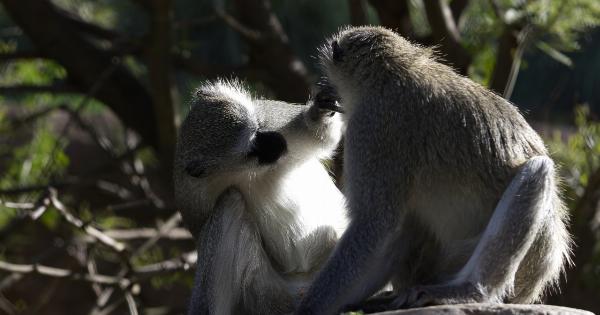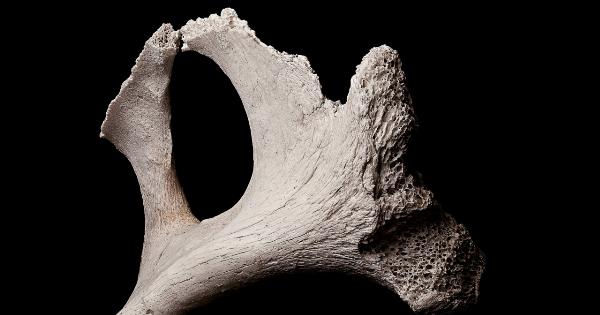When it comes to scientific research, hypotheses play a crucial role in shaping the direction and outcomes of experiments. These educated guesses serve as the foundation for any scientific investigation, guiding researchers in their quest for knowledge.
But what happens when hypotheses lead to unexpected results? In this gallery of images, we explore the hypothesis conundrum, showcasing fascinating examples where predictions were challenged, assumptions were shattered, and scientists were left scratching their heads.
The Butterfly Effect
In chaos theory, the “butterfly effect” refers to the idea that small initial differences in a complex system can result in large and unpredictable variations in the future.
One of the most famous examples of this phenomenon occurred during the early days of weather prediction. In the 1960s, Edward Lorenz, a meteorologist, made a groundbreaking discovery. He found that even the tiniest changes in initial conditions, such as rounding numbers in computer simulations, could dramatically alter the outcome of weather predictions.
This unexpected finding revolutionized the field of meteorology and highlighted the challenges scientists face when working with complex systems.
Visible Light vs. Infrared
When Sir William Herschel began his experiments with sunlight in the 18th century, he hypothesized that the intensity of the different colors of light increased moving from violet to red.
However, during one experiment, Herschel placed a thermometer outside the red end of the visible spectrum and noticed an increase in temperature. This led him to discover the existence of infrared radiation, which lies beyond red light in the electromagnetic spectrum. Herschel’s hypothesis was overturned by his own observations, showing that there was more to light than initially thought.
Spontaneous Generation
For centuries, it was widely believed that living organisms could arise spontaneously from non-living matter. This concept, known as “spontaneous generation,” was prevalent until the mid-19th century when scientists began to challenge it.
One such scientist was Louis Pasteur, who designed a series of experiments to test the hypothesis. Using swan-necked flasks, Pasteur demonstrated that bacteria and other microorganisms only appeared in the broth when it was exposed to air carrying these organisms.
This experiment debunked the theory of spontaneous generation and paved the way for the germ theory of disease.
The Expanding Universe
In the early 20th century, the prevailing view in cosmology was that the universe was static and unchanging. However, this hypothesis was toppled by the work of astronomer Edwin Hubble.
By observing the redshift of light from distant galaxies, Hubble discovered that the universe was expanding. This finding led to the formulation of the Big Bang theory, which posits that the universe began with a massive explosion and has been expanding ever since.
Hubble’s groundbreaking observations challenged the long-standing notion of a static universe and opened up new possibilities for understanding the cosmos.
Project MKUltra
Project MKUltra was a top-secret CIA program that aimed to explore the potential use of drugs for mind control and interrogation purposes.
One of the hypotheses that guided this controversial project was that psychedelic drugs like LSD could be used to weaken an individual’s resistance and facilitate the extraction of information. However, the project took an unexpected turn when researchers themselves became subjects of mind-altering experiments.
Some scientists involved in the program experienced severe psychological effects, leading to ethical concerns and the eventual dismantling of MKUltra. The hypothesis of drug-induced mind control led to unintended consequences and raised important questions about the ethical boundaries of scientific research.
Mars: The Methane Mystery
When spacecraft and rovers began exploring the surface of Mars, scientists were hopeful about the possibility of finding signs of past or present life on the red planet.
One hypothesis suggested that methane detected in Mars’ atmosphere could be a potential indicator of microbial life. However, subsequent observations have revealed a complex methane cycle with unexplained variations. Some measurements show spikes in methane concentration, while others fail to detect it at all.
Determining the origin and significance of this methane remains a puzzle, challenging scientists to reconsider their initial hypotheses and explore alternative explanations for this enigmatic phenomenon.
Quantum Entanglement
Quantum entanglement is a mind-bending phenomenon in quantum physics where particles become interconnected, their states linked regardless of distance.
Albert Einstein famously referred to this phenomenon as “spooky action at a distance.” The hypothesis of quantum entanglement initially met with skepticism from Einstein and others, who believed it clashed with the principle of local realism. However, a series of experiments and observations, including the famous Bell’s theorem experiment, has demonstrated that entanglement is a fundamental aspect of the quantum world.
The unexpected results of these experiments have challenged our intuitions about the behavior of particles and have pushed the boundaries of our understanding of the quantum realm.
Dark Matter Dilemma
Astronomers have long observed the gravitational effects of invisible matter in the universe, leading to the hypothesis of dark matter.
According to this hypothesis, dark matter makes up a significant portion of the universe’s mass but interacts very weakly with electromagnetic radiation, making it invisible to traditional telescopes. Despite many years of research and various experiments, scientists have yet to directly detect dark matter particles, leaving the nature of this mysterious substance unresolved.
The ongoing quest to unravel the dark matter dilemma challenges researchers to develop new experimental techniques and continue expanding our understanding of the universe.
Gene-Environment Interaction
In the field of genetics, the nature vs. nurture debate has long been a subject of exploration.
The hypothesis of gene-environment interaction proposes that an individual’s traits result from a combination of genetic factors and environmental influences. However, pinpointing the exact interactions between genes and the environment has proven to be a complex endeavor. Epigenetics, the study of heritable changes in gene expression, has shed light on how environmental factors can modify gene activity.
This emerging field challenges simplistic views of genetic determinism and emphasizes the intricate interplay between nature and nurture.
Memory Reconsolidation
Traditionally, memories were thought to be fixed and unchangeable after they were initially stored. However, the hypothesis of memory reconsolidation suggests that memories can become malleable during retrieval and reconsolidate in a modified form.
This idea challenges the long-held belief that memories are static entities. Experiments using animals and humans have provided evidence for memory reconsolidation, with potential implications for the treatment of traumatic memories and the understanding of memory-related disorders.
This hypothesis revolutionizes our understanding of memory formation and opens up avenues for further research.
Conclusion
The hypothesis conundrum showcased in this gallery of images underscores the dynamic nature of scientific inquiry. Scientists constantly grapple with unexpected results, as hypotheses are challenged and revised in the pursuit of knowledge.
These instances of paradigm shifts and overturned assumptions push the boundaries of human understanding and remind us that science is an ever-evolving endeavor. As researchers continue to explore the mysteries of the universe, they will undoubtedly encounter more conundrums, leading to new discoveries and a deeper appreciation for the complexities of our world.






























